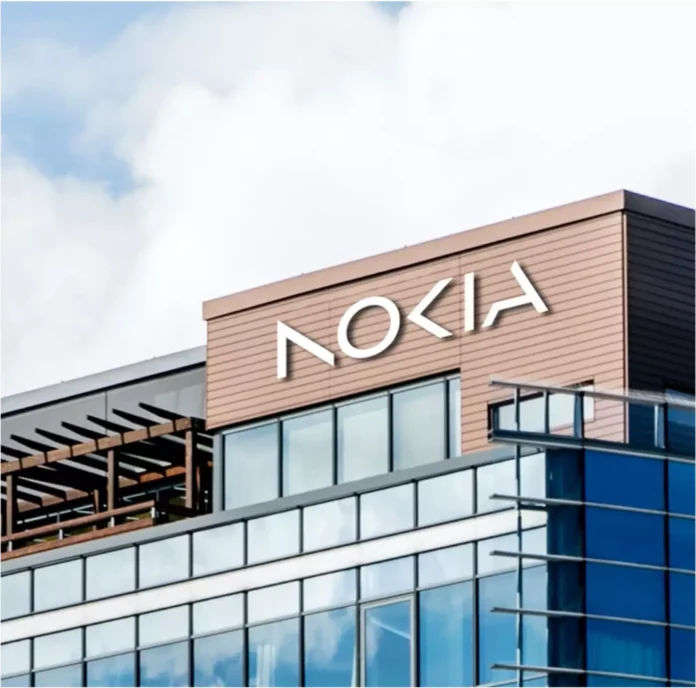CEO Pekka Lundmark calls results ‘a resilient performance considering the challenging environment’
Nokia saw an expected decline in revenues during the fourth quarter and full-year of 2023, but the company’s results were better than investors were expecting, due in part to cost-cutting measures. While the company saw improving order trends in the fourth quarter, CEO Pekka Lundmark also said that it was unclear whether mobile network investment has hit the bottom of its current decline.
Nokia’s stock was up more than 11% in midday trading on the NYSE on Thursday on its results and news of a stock buyback program.
The company reported overall revenues down 21% year-on-year in the fourth quarter and 8% for the year, driven by continued investment pullback in the North American market and normalization of the 5G deployment cycle in India. However, it also said that it sees “signs of stabilization with improving order trends.” Nokia CEO Pekka Lundmark noted that Nokia’s network infrastructure business in particular saw improving orders as the year ended.
“This was a resilient performance considering the challenging environment,” Lundmark said, adding that another contributing factor to the financial performance was that several patent renewal deals (a particularly high-margin area of Nokia’s portfolio) had not yet closed.
On Nokia’s quarterly call, the importance of the company’s mobile networks business was evident—as was the acknowledgement that Nokia losing out to Ericsson on a big Open RAN deal with AT&T was, as Lundmark put it, a “disappointing development.” But it was also clear that Nokia is focused on diversifying its customer base beyond the network needs of the Communications Service Provider (CSP) market.
Nokia’s enterprise net sales were down 3% in the fourth quarter compared to the same period in 2022, despite adding 151 new enterprise customers, but that segment was up 16% for the year. In private wireless, Lundmark said that Nokia is seeing “strong growth” with more than 710 customers. Almost half of the company’s enterprise sales come from selling its network infrastructure products into “targeted enterprise verticals, particularly those that value mission-critical networks,” he added. Nokia also sees webscale customers as an important opportunity.
As Nokia looks ahead to the second half of the decade, Lundmark says by then it will have “significantly increased” its mobile network business beyond CSPs, including private wireless, the defense industry and its interest in replacing proprietary military communications technology with standards-based commercial tech including 5G, and the hyperscaler market. Lundmark noted that Nokia’s business with hyperscalers “has been fairly optical-driven” but sees growth potential in data-center switching, where it is a market challenger. “We have an increasingly strong product portfolio for that based on our in-house silicon, which is welcomed by hyperscalers, combined with [a] strong software offering that offers a lot of flexibility for different data center architectures,” Lundmark said. “We believe that there is a possibility to gradually break into this market and get meaningful growth in the segment because, of course … we all know that the CSP market as a whole will not be a growth market”—particularly, he pointed out, compared to the growth in the data center market.
But the market and time in which Nokia is currently operating “will remain tough at least for the first half of the year,” Lundmark told investors. Overall, he said, Nokia is “2023 was a tough year for the whole market, of course, most pronounced in North America.” But, Lundmark said, “[the] fact still remains that only about 25% of base stations outside of China are 5G midband. And a small majority of all core networks have been upgraded 5G advanced. And those investments will need to come, because without that operators will not be able to monetize 5G properly.”
Increasing data traffic will eventually force operators to invest in their networks, he went on, “but the reality is that nobody knows when that will come. I’m absolutely convinced that it will come, but we are not yet seeing concrete signs of it happening.”
On Open RAN, Lundmark said that the technology is “gradually gaining speed,” but he urged industry observers to “follow up very closely that what the facts about different rollouts are including in all announced projects, how quickly will it be? And will it be true O-RAN, or will it be O-RAN where you just have the same supplier on both sides of the interface?” He said that there are “two real commercial O-RAN deployments ongoing at the moment”: Those of NTT DoCoMo and Deutsche Telekom, and in the latter project, Nokia has already connected its DU and CU to the RUs of five radio suppliers. Open RAN, Lundmark said, “a small part of the market for quite some time. But as I have said before, we see it as more as an opportunity than a threat for Nokia.”

